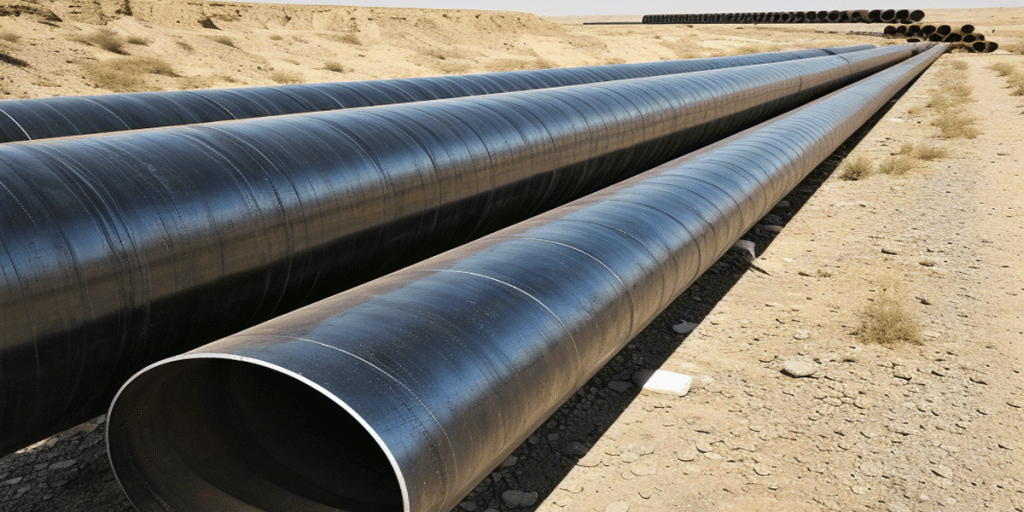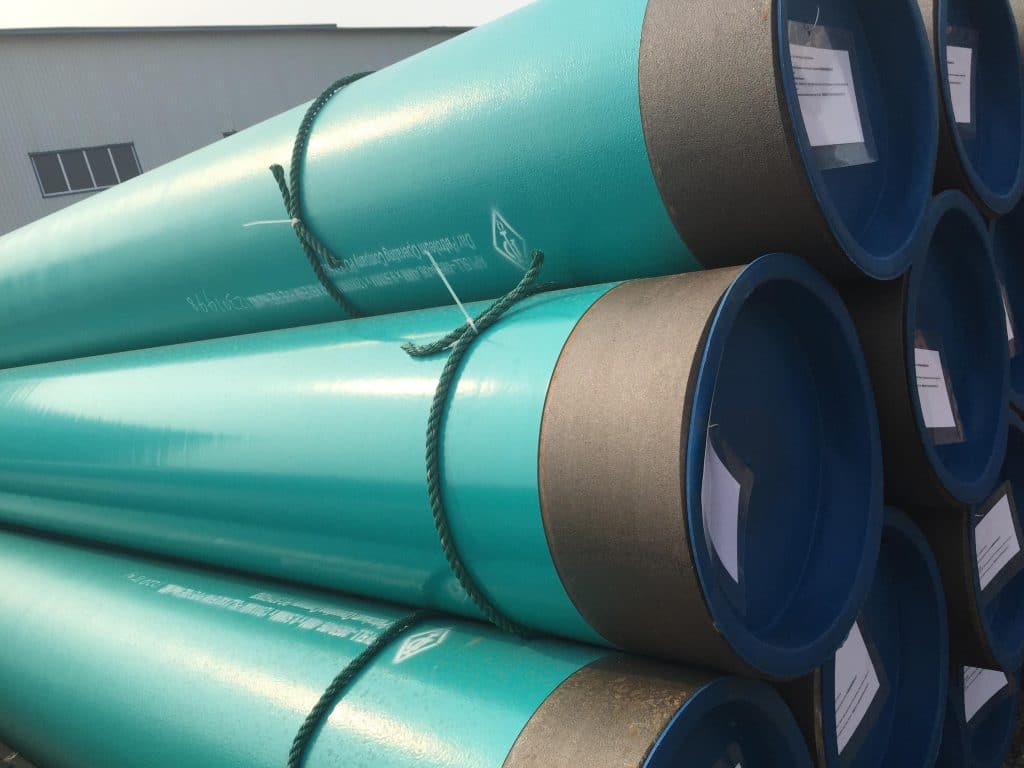- 1. Standards and Applicability: The Standard Explicitly States “For Water and Gas”
- 2. Why Engineers and Contractors Prefer ASTM A53
- 3. Brief Comparison: ASTM A53 vs. Common Alternatives (Selection Reference)
- 4. How to Properly Specify ASTM A53 in Water Supply/Gas Engineering
- 5. Conclusion
- 6. LONGMA — Your Steel Pipe Partner
- 7. References
Under most conventional operating conditions for urban water supply, drainage, and town gas systems, ASTM A53 pipes—especially Grade B Electric Resistance Welded (ERW) or hot-dip galvanized (HDG) variants—are the first choice. This is due to their standard scope explicitly supporting applications in “water, gas, and air lines,” comprehensive specifications, favorable cost and availability, and compatibility with hot-dip galvanizing or coatings to meet corrosion resistance and drinking water requirements. Disclaimer: For extreme high pressure/high temperature or hazardous media, higher-grade pipes (e.g., ASTM A106, API 5L) must still be selected based on engineering calculations.
Standards and Applicability: The Standard Explicitly States “For Water and Gas”
The provisions of ASTM A53 explicitly cover seamless and welded black pipes, as well as hot-dip galvanized pipes, making them suitable for general pressure applications such as steam, water, gas, and air. This fundamentally ensures their widespread adoption in water supply, drainage, and gas engineering projects. Grade B is typically the primary choice (offering superior mechanical properties).
Why Engineers and Contractors Prefer ASTM A53
- Code Support and Inspectability (Strong Compliance)
ASTM A53 is a commonly used pipe standard recognized by international and regional codes. Once specified in contracts (with requirements for Material Test Certificates (MTC), Non-Destructive Examination (NDE), and hydrostatic testing), it can fully meet inspection and acceptance procedures.
- Galvanized Variants for Drinking Water and Weather Resistance Requirements
Hot-dip galvanized (HDG) ASTM A53 pipes are widely used in water supply and fire protection systems. The galvanized coating enhances corrosion resistance, extends pipe service life, and is a common choice for residential and municipal water supply.
- Comprehensive Specifications and On-Site Installation Friendliness (ERW and LSAW Complementarity)
ASTM A53 covers nominal pipe sizes (NPS) from 1/8 to 26, with common schedules (Sch10, Sch40, Sch80) available in stock or with short lead times. Small diameters typically use ERW pipes (offering cost and lead time advantages), while large-diameter/thick-walled projects can use Longitudinal Submerged Arc Welded (LSAW) pipes. This combination meets all needs, from household water supply to municipal trunk lines.
- Cost and Supply Chain Advantages
ERW pipes feature high production efficiency and low unit prices, making them ideal for large-volume procurement in municipal or building projects. Meanwhile, the mature supply chain provides complete accessories (flanges, threaded joints, grooved joints), reducing on-site system integration costs.
- Sufficient Mechanical Properties (Grade B Meets Most Operating Conditions)
The minimum tensile/yield strengths of ASTM A53 Grade B are approximately 415 MPa / 240 MPa (60 ksi / 35 ksi), which is sufficient for most medium- and low-pressure water supply, drainage, and urban gas branch lines. However, engineering design still requires calculating wall thickness and design pressure in accordance with ASME or local pipeline formulas.
Brief Comparison: ASTM A53 vs. Common Alternatives (Selection Reference)
| Item | ASTM A53 | ASTM A106 / API 5L |
| Typical Applications | Water supply, HVAC, low/medium-pressure gas branches, fire protection | High-temperature/high-pressure process pipes, long-distance critical oil & gas trunk lines |
| Manufacturing Process | ERW / LSAW / seamless (depending on diameter) | Mostly seamless (ASTM A106) or grade-specific welded (API 5L) |
| Corrosion Protection Options | Hot-dip galvanizing / Fusion-Bonded Epoxy (FBE) / coatings | FBE / internal linings / special alloy coatings |
| When to Replace | When temperature/pressure/media exceed limits or for safety-critical applications | For high-temperature, high-pressure, or hazardous media scenarios |
(Data and applications referenced from ASTM standards and industry comparison materials.)
How to Properly Specify ASTM A53 in Water Supply/Gas Engineering
- Clarify operating conditions (design pressure, temperature, medium, burial depth/geology).
- Prioritize Grade B (for better mechanical strength) and calculate the minimum wall thickness (per Barlow/ASME standards).
- For buried water supply/gas pipelines, confirm corrosion protection measures (galvanizing, FBE, or polyethylene coating) and specify corrosion protection acceptance criteria.
- For ERW pipes, require weld quality records and necessary NDE (e.g., hydrostatic testing, Ultrasonic Testing (UT), or Radiographic Testing (RT)), and explicitly state these requirements in procurement technical clauses.
Conclusion
Overall, ASTM A53 stands as the routine first choice for water supply, drainage, and gas pipelines, thanks to its standard coverage, availability of galvanized variants, advantages in specifications and cost, and the complementary nature of ERW and LSAW manufacturing processes. However, for high-temperature, high-pressure, or safety-critical projects, it is necessary to switch to seamless high-temperature pipes (e.g., ASTM A106) or more stringent transportation standards (e.g., API 5L) and conduct comprehensive engineering verification.
LONGMA — Your Steel Pipe Partner
As a professional manufacturer of ERW and LSAW round steel pipes, LONGMA offers:
- Supply of pipes conforming to multiple standards (ASTM A53 Grade A/B, ASTM A106, API 5L), with support for hot-dip galvanizing, FBE, and customized corrosion protection.
- Complete documentation: Material Test Certificates (MTC), NDE (UT/RT) reports, hydrostatic testing records, and batch tracking.
- Engineering selection support: Pressure/wall thickness calculation, galvanizing/corrosion protection recommendations, end processing, and accessory matching.
- Stable production capacity and regular inventory (common Sch40/Sch80 and gas-specific sizes) for rapid response to project bidding and tendering needs.
Want to confirm if ASTM A53 is suitable for a specific water supply or gas pipeline? Send us the design pressure, temperature, pipe diameter, and medium—we will provide feasibility conclusions, alternative recommendations, and quick quotes based on standards and ASME calculations.
References
- ASTM A53 Standard Text and Scope Description
- Industry Practices: Common Guidelines for ASTM A53 in Gas Branch Pipes and Above-Ground Installation
- Applications and Product Examples of Galvanized ASTM A53 in Water Supply/Home Improvement Markets
- Comparison of ERW/LSAW Processes and Their Applicability
- Summary of Mechanical Property Data for ASTM A53 Grade A/B






